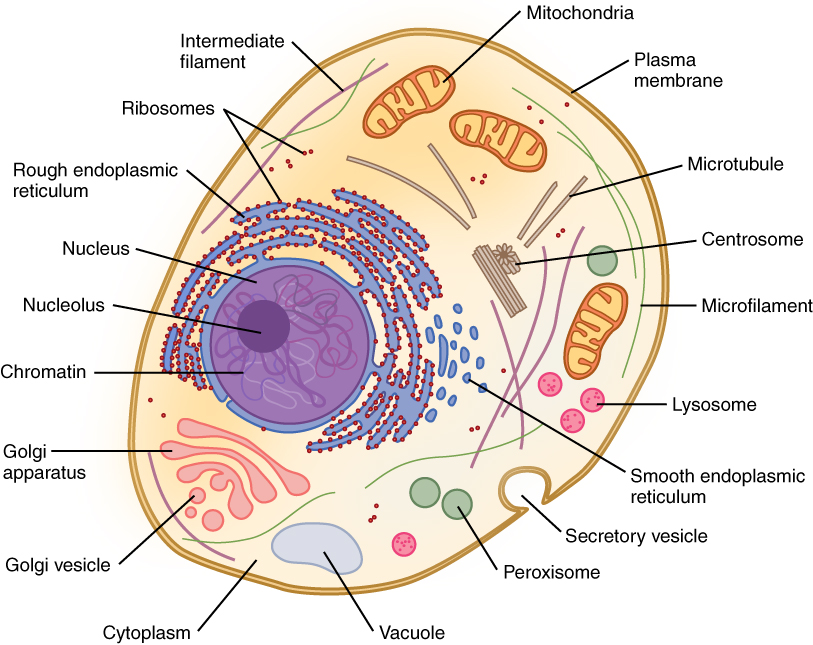Identify the Structures of a Prototypical Human Cell
3 Book sphase ONA G phase Growth and preparation ONA a phase Growth and parente Son of DNA Metaphase Telophase Prophase Anaphase Identify the components. D SOK Golgi apparatus Nucleus Mitochondrion Plasma membrane Cytosol AN NINH Ng Identify each stage of mitosis using the images as a guide.

Solved Identify The Structures Of A Prototypical Human Cell Chegg Com
It helps in moisture retention protects the cell when.

. Identify the structures of a prototypical human cell. This Anatomy Physiology AP quiz is designed to test your knowledge of the basic cell structure and function. Identify the structures of a prototypical human cell.
The basic components of a human cell are the cell membrane the cytoplasm the nuclear membrane and the nucleus. Nuclear membranes mitochondria endoplasmic reticulum Golgi body phagosomes and lysosomes are not present Figures 1b 2 and 3. Mitochondrion Golgi apparatus om Plasma membrane Cytosol Nucleus.
Terms in this set 50 Identify the structures of a prototypical human cell. Identify the forms of endocytosis using the illustration as a guide. Prokaryotic organisms have varying cell shapes.
Animal cells contain three main regions. D SOK Golgi apparatus Nucleus Mitochondrion Plasma membrane Cytosol AN NINH Ng Identify each stage of mitosis using the images as a guide. The nucleus is a cells central organelle which contains the cells DNA Figure 313.
Identify the structures of a prototypical human cell. The human body is made up of roughly 10 trillion cells each held together by a cell membrane. Now that you have learned that the plasma membrane surrounds all cells you can dive inside of a prototypical human cell to learn about its internal components and their functions.
However the genetic material is present in a region in the cytoplasm known as the nucleoid. Anatomy and Physiology questions and answers. The nervous system is composed of two basic cell types.
Within each of these parts are smaller structures such as the organelles which have specialized functions within the cell. Label each type of intercellular junction. 3 Book sphase ONA G phase Growth and preparation ONA a phase Growth and parente Son of DNA.
You will be asked questions that pertain to the mitochondria nucleolus nuclear membrane ribosomes lysosome and much more. The structures of the TCAs are generally rather conserved with a tricyclic scaffold of either a six-or seven-membered ring flanked by two phenyl moieties. Glial cells also known as glia and neurons.
Identify the structural components of a prototypical cell and name their functions. This practice test for the cell function and structure for Anatomy Physiology is designed to help you for your exam by. Plasma membrane nucleus and cytoplasm.
Complete the sentences regarding the vessels of the cardiovascular system. Figure 31 Fluorescence-stained Cell Undergoing Mitosis A lung cell from a newt commonly studied for its similarity to human lung cells is stained with fluorescent dyes. Label the parts of the atom.
Identify each stage of mitosis. These parts of the endoplasmic reticulum contain a number of ribosomes giving it a rough appearance. Identify the structures of a prototypical human cell.
Arterial systolic pressure is. Identify each stage of mitosis using the images as a. A prokaryotic cell does not have a nuclear membrane.
Figure 313 Prototypical Human Cell While this image is not indicative of any one particular human cell it is a prototypical example of a cell containing the primary organelles and internal structures. Therough endoplasmic reticulumRER granular ER contains a combination of proteins and enzymes. Identify the components of the plasma membrane.
On the other hand eukaryotic cells are cells that contain nucleus together with membrane bound organelles. Capsule It is an outer protective covering found in the bacterial cells in addition to the cell wall. Then put the sentences in order of blood flow through the body.
Glial cells which outnumber neurons ten to one are traditionally thought to play a supportive role to neurons both. Cell membrane mitochondrion endoplasmic reticulum golgi apparatus nucleus lysosome centriole ribosome and cytoplasm. The nucleus is a cells central organelle which contains the cells DNA Figure 1.
Download scientific diagram Structures of prototypical type II polyketides. Prokaryotic cells are not as complex as eukaryotic cellsThey have no true nucleus as the DNA is not contained within a membrane or separated from the rest of the cell but is coiled up in a region of the cytoplasm called the nucleoid. A prokaryotic cell structure is as follows.
-Prokaryotes differs from eukaryotes in a number of ways however they are similar in structure such that they both contain. There are two types of endoplasmic reticulum rough granular and smooth agranular. They may be spherical rod-shaped or spiral.
Learning how the cells and organs like the brain function help us understand the biological basis behind human psychology. Bacterial Cell Anatomy and Internal Structure. Match the following terms with the correct definition.
While this image is not indicative of any one particular human cell it is a prototypical example of a cell containing the primary organelles and internal structures. Structures of prototypical TCAs. Identify the structures of a prototypical human cell.
The prokaryotic cell in contrast to the eukaryotic cell is not compartmentalized. Structures of chlortetracycline 1 doxorubicin 2 R1128A 3 and the pentangular polyketide frankiamicin A. Identify the structures of a prototypical human cell.
The green stain reveals mitotic spindles red is the cell membrane and part of the cytoplasm and the structures that appear light blue are chromosomes. D SOK Golgi apparatus Nucleus Mitochondrion Plasma membrane Cytosol AN NINH Ng Identify each stage of mitosis using the images as a guide. 3 Book sphase ONA G phase Growth and preparation.

The Nucleus And Cytoplasm Anatomy And Physiology

Chapter 4 Question Set Anatomy Flashcards Quizlet

Solved Identify The Structures Of A Prototypical Human Cell Chegg Com
Comments
Post a Comment